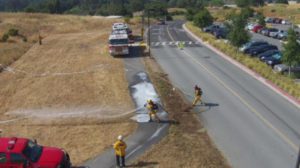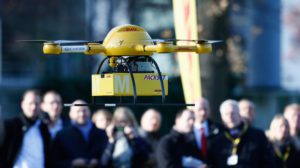In the ever-evolving world of solar energy, maintaining the efficiency of solar panels is paramount. Traditional manual inspections of solar panels installed in vast solar farms are not only time-consuming but often less accurate. However, the advent of drone technology, equipped with high-resolution cameras and thermal imaging, has revolutionized solar inspections, offering a myriad of benefits over conventional methods.
Benefits of Using Drones for Solar Panel Inspections
Time and Cost Savings
One of the most significant benefits of using drones to inspect solar panels is the considerable reduction in time and cost. Traditional manual inspections are labor-intensive and can take several days to complete, especially in large solar farms. Drones, on the other hand, can cover vast areas in a fraction of the time, reducing labor costs and downtime. This efficiency translates into significant cost savings for solar farm operators.
Enhanced Data Management
Drones equipped with advanced data management systems can capture and store vast amounts of data. High-resolution cameras and thermal imaging technology allow drones to detect issues such as hot spots, shading, or soiling on solar panels, which might not be visible during manual inspections. This precise data collection facilitates better decision-making and ensures that solar panels operate at optimum efficiency.
Improved Safety and Accessibility
Inspecting solar panels, especially those installed in challenging terrains or at heights, poses safety risks to inspectors. Drones eliminate the need for human climbers, reducing the risk of accidents and ensuring safer inspection processes. Moreover, drones can easily access difficult-to-reach areas without the need for scaffolding or other expensive equipment.
Accurate and Comprehensive Inspections
Drones provide a level of detail and accuracy that manual inspections cannot match. Equipped with high-resolution cameras and thermal imaging, drones can identify defects and inefficiencies with precision. They can detect minor issues before they escalate into major problems, ensuring the long-term health of the solar panels and the overall system.
Reducing the Environmental Impact
Utilizing drone technology for solar panel inspections aligns with the eco-friendly goals of solar energy. By reducing the need for manual inspections, drones help minimize human impact on the environment surrounding solar farms. This approach not only preserves the natural habitat but also supports the sustainability objectives of solar energy initiatives.
A leap forward for inspections
The integration of drone technology in the maintenance and inspection of solar panels represents a significant leap forward in the solar energy sector. The benefits of using drones for solar panel inspections, including cost savings, enhanced data management, improved safety, and environmental conservation, make this innovative method a valuable tool for solar farm operators and stakeholders. By harnessing the power of drone technology, the solar industry can ensure that solar panels are maintained efficiently, contributing to the global shift towards sustainable energy sources.
For more detailed insights into the benefits of drone inspections for solar panels, explore the following resources: The Drone Life NJ, ARKA 360, and LinkedIn.


